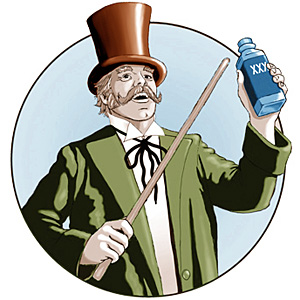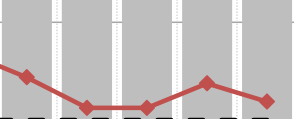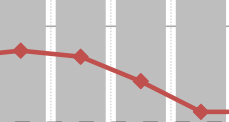State Predicts DFW Will Fail New Smog Standard, But Air Quality Is Getting Better!
 By 2018 the Texas Commission on Environmental Quality predicts DFW will finally be in compliance with the federal ozone standard. The 1987 federal ozone standard. The 2012 ozone standard? Not so much.
By 2018 the Texas Commission on Environmental Quality predicts DFW will finally be in compliance with the federal ozone standard. The 1987 federal ozone standard. The 2012 ozone standard? Not so much.
That was the bottom line of last Tuesday's very defensive TCEQ staff presentation on the new effort to rein-in North Texas smog at the Council of Government's headquarters in Arlington, in what could be considered the kick-off meeting of yet another "State Implementation Plan," or SIP, for DFW. A plan drawn up by the state has to be submitted in place by June of 2015, with a goal of meeting the new 75 parts per billion ozone standard by the summer of 2018.
But even giving generous credit for the effect of new, lower sulfur gasoline standards, the TCEQ's computer model predicts the area will fall short of the 75 ppb goal at four very familiar monitor sites, with final estimates just a fraction above 75 ppb at Keller, readings of 76 ppb at Grapevine and Eagle Mountain Lake and as high as 77 ppb in Denton. To understand how optimistic even this result is however, you have to know that the Denton monitor is sitting at an average of 87 ppb as of this last summer. It took 10 years for that monitor to come down from an average of 97 ppb of ozone in 2003 to 87 ppb in 2013. With its new model, TCEQ is asking everyone to believe that ozone levels will come down another 10 ppb in less than five years.
As this excellent Denton Record Chronicle piece about the TCEQ effort points out, there's plenty of reasons to be skeptical. The agency has been wildly inaccurate in its past predictions. According to the last computer model the TCEQ ran, DFW was supposed to be enjoying record low ozone levels by now. It never happened, and in fact we're still in violation of the old 1987 standard of 85 ppb.
It's this lack of progress, particularly in the last thee years, that Downwinders and others cite when we're making the argument that more aggressive control measures are needed. In countering us, the state keeps insisting that – compared to 2003 – we're doing much better. And that's true -if you stretch things out over a decade we have gotten better. But compared to 2009 and 2010, we're doing the same or even worse. Look at the last three years of results and there's no way to conclude that DFW air quality is "getting better." It's just not true.
And all of this is really just a proxy for the fight over how much natural gas pollution is to blame for that stagnation. If there's no stagnation, there can be no cause of that stagnation. If there's a rollback in air quality, there must be a cause for the rollback. And many of us think that it just might be the pervasiveness of gas productions facilities within and surrounding DFW that are contributing factors.
Chris Kite, the TCEQ computer modeler that produced the new plan, used his presentation to mostly try to rebut specific quotes and arguments cited by Downwinders Director Jim Schermbeck about the lack of local air quality progress. It was a rare and raw indication of just how much TCEQ's Austin Headquarters considers Downwinders a threat. Too bad that even his own charts betrayed Mr. Kite's counter-thesis.
For instance, look at the numbers from 2008 to 2012 for average smog levels in DFW and see if you can cite the progress in this slide from the TCEQ PowerPoint:
For the past two years, our average has been higher than the two years before that. That ain't progress. Especially if you look at the previous four years, 2006 to 2009:
We're trying to think of what might have happened since 2008 to make it more difficult for the DFW region to attain a 1987 ozone standard at a time when emissions from just about every traditional source of smog pollution have been going down. Oh yeah, there was a huge natural gas field that opened up in the heart of the western part of the Metromess. But don't try telling the TCEQ that. They're convinced, absolutely convinced, that gas industry pollution couldn't possibly be responsible for any lack of progress in DFW air quality. Because hey, there hasn't been any lack of progress, and even if there wasn't, it wouldn't be due to the thousands of new gas sources. They're as sure of this as they are about their new computer model. Which is why the rest of us should keep an open mind.
TCEQ is hoping that coming close is good enough for EPA, that they can take advantage of something called "weight of evidence" that says that a clean air plan's parts are larger than its actual numerical sum and EPA reasonably expects the thing to succeed despite not all monitors hitting 74 ppb or below by 2018. In this way, Austin once again hopes to avoid any discussion about new control measures. But that's hanging your hat on a very precarious hook, given the agency's poor prognostication, and the EPA may demand a larger margin of safety.
In fact, an honest review of TCEQ's track record for past DFW clean air plans would necessarily place the "weight of evidence" in this new one on the agency itself to show that they'll get at least 10 ppb or more below the 75 standard just to make sure they come close to achieving compliance.


